Imagine creating your own language online. Every word you generate can turn your imagination into reality.
Designing a fantasy world, novel, or game, and the task of making a language out of it, seems to be a burden too heavy to handle the very first time around.
But it becomes easy and fun when using any of the AI language creator, fantasy language creator, or fantasy language designer.
What is a language generator?
A language generator is an online AI tool. People also call it a language creator online, language maker, or fantasy language generator.
This tool helps you create new languages or change existing ones easily.
But how does a language generator work, and why should you consider using one? Let’s break it down.
The Basics of Language Generators
At their core, language generators use artificial intelligence to mimic linguistic structures. They analyse patterns in phonetics, syntax, and grammar to create languages that feel authentic yet entirely unique. Some tools even allow you to customise rules and word choices, tailoring the results to fit your vision perfectly.
Here’s what a language generator can help you achieve:
- Create consistent linguistic systems: From grammar rules to phonetics, these tools ensure every aspect of your language aligns seamlessly.
- Generate new words instantly: Need word choices for your made-up world? A language creator online can provide endless options.
- Experiment with Creativity: Use a fantasy language maker for a game or a fictional language generator for a story. These tools can help you unlock your creative potential.
Why Use AI for Language Creation?
Traditional language creation can take months, if not years, of meticulous work. AI-powered language makers streamline this process, saving time while offering endless possibilities. Imagine building a comprehensive language for your fantasy world in just a few clicks!
Here’s why they’re worth exploring:
- Ease of Use: Most tools are beginner-friendly, even for those with no linguistic background.
- Customisation: You can define specific parameters, like phonetic styles or cultural influences.
- Efficiency: Focus more on your creative projects and less on the technical details of language creation.
A Tool for Everyone
From authors and screenwriters to educators and hobbyists, language generators are versatile tools that cater to various needs. For a fun fake language generator, there’s a tool available. If you need a language randomizer to inspire creativity, there is also a tool for that.
By using AI, these tools create many new creative options. They make language creation easier, more exciting, and more efficient than ever. So, why not give it a try and see where your imagination takes you?
Key Features of AI-Powered Language Generators
AI-powered language generators have many features. They make it easy to create unique languages. This process is not only possible but also incredibly simple.
These tools address both the technical and creative aspects of language design, allowing for flexibility and efficiency.
1. Custom Word Choices and Grammar
One great feature of an online language creator is that you can customise your language for specific needs. You can create a word lis that sounds like ancient dialects. You can also design grammar rules for a futuristic language. These tools give you complete control.
Here’s how customization works:
- Define phonetic patterns and word structures.
- Set grammar rules, such as verb conjugations or sentence syntax.
- Add unique symbols or scripts for visual appeal.
2. Phonetic and Speech Design
Ever wondered how languages get their distinct sounds? AI fantasy language makers allow you to experiment with phonetics, helping you craft languages that sound authentic and engaging. You can:
- Choose specific sounds or exclude ones you dislike.
- Generate audio samples to hear how your language sounds when spoken.
- Refine accents or tones for added realism.
3. Cultural and Contextual Integration
For creators who want their language to connect with a specific culture, AI tools can include elements like:
- Unique idioms or expressions.
- Symbols and writing styles are reflective of fictional cultures.
- Contextual rules based on your story’s environment or character traits.
4. Randomization for Creativity
Sometimes, the best ideas come from unexpected places. A language randomizer is perfect for sparking creativity, offering:
- Randomly generated words or phrases.
- Unique linguistic structures you can build upon.
- Fresh inspiration when you’re feeling stuck.
5. Seamless Export and Integration
For creating dynamic text with your language generator, tools like Chat AI Text Generators are incredibly helpful. They are great for storytelling and interactive projects.
Many tools allow you to:
- Export dictionaries or scripts in various formats.
- Integrate your language into games, apps, or writing software.
- Save and edit your creations for future refinement.
Why These Features Matter
These features are not just conveniences but also tools of creative empowerment, as with the right fictional language generator, one can get a consistent, culturally rich language all his or her own.
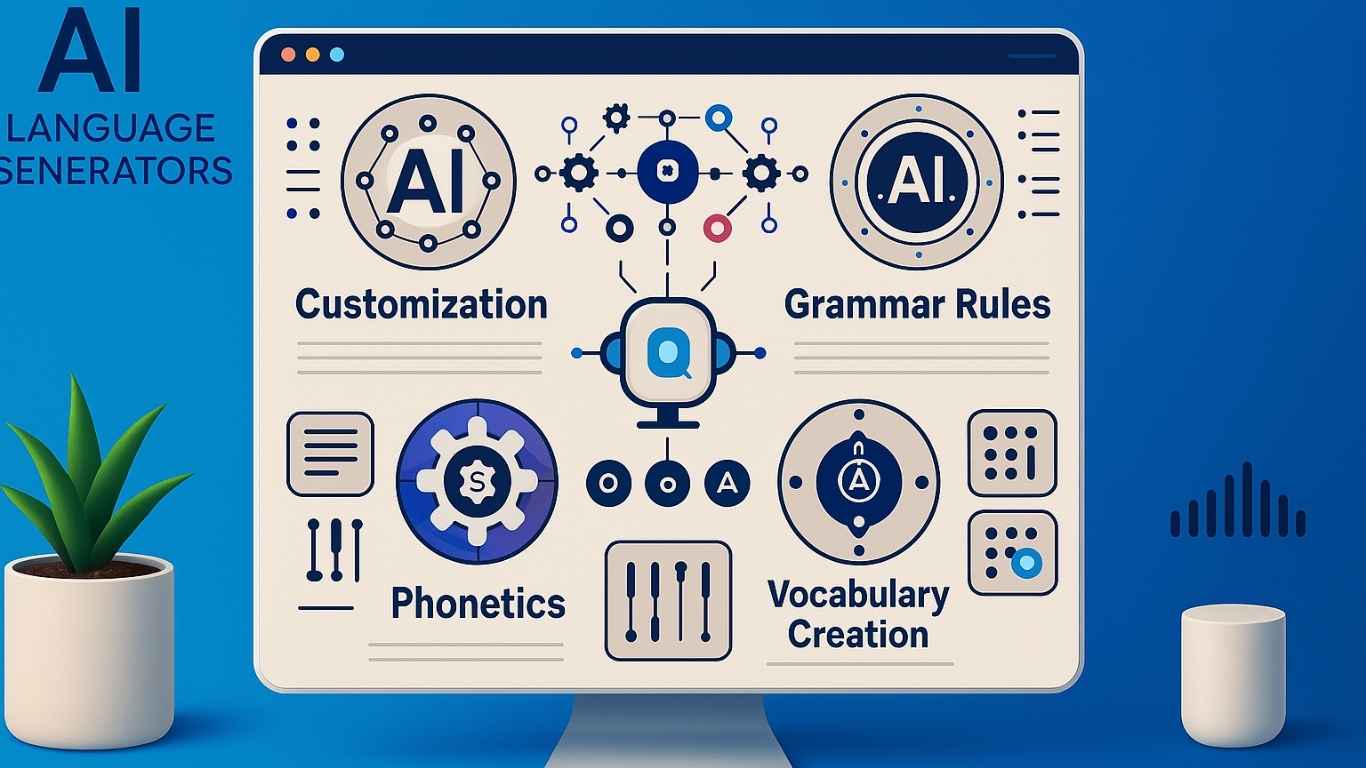
Popular Use Cases for Language Generators
AI language generators are fun tools, but they’re so much more than that: they’re changing how creativity is expressed in a wide variety of fields—from writers to gamers, teachers to a person trying new hobbies—by providing really cool ways they can inspire an individual’s projects. Let’s look at a few of the most interesting uses.
1. Fantasy Worldbuilding for Writers and Gamers
Worldbuilding often requires creating immersive environments, and a well-designed language can make all the difference. Using a fantasy language generator, creators can:
- Develop unique languages for novels or screenplays.
- Add depth to fictional worlds with authentic-sounding dialogues.
- Enhance video games with immersive languages for characters and cultures.
The books become tremendously serious owing to languages such as Elvish in The Lord of the Rings or Dothraki in Game of Thrones. These languages make the world feel more real. They also make the stories more engaging for the audience.
2. Linguistic Experimentation for Researchers
Language researchers often use made-up language generators to:
- Study how languages evolve.
- Test theories about syntax, semantics, and phonology.
- Analyse linguistic diversity by experimenting with different grammatical rules.
3. Creating Unique Brand or Product Languages
Businesses and brands are also tapping into the potential of language makers. These tools help:
- Create brand-specific terms or slogans.
- Develop fictional languages for marketing campaigns.
- Add a unique identity to products, especially in gaming or entertainment.
Example: A fake language for a sci-fi brand can intrigue and captivate a niche audience.
4. Enhancing Learning and Educational Tools
Educators are finding creative ways to use fictional language generators in teaching.
- Engage students in language classes with playful, AI-generated languages.
- Teach linguistic principles in a fun and interactive way.
- Use generated languages to create puzzles and educational games.
5. Fun and Hobbyist Exploration
Not every use case must be serious! Hobbyists can use a language randomizer for:
- Creating secret codes or cyphers.
- Designing fun languages for personal projects.
- Exploring creative outlets and stretching their imagination.
Why These Use Cases Matter
The above examples all carry with them distinct purposes to show how language generators can be highly versatile and accessible tools. They definitely happen to be portals to creativity, inventiveness, and deeper engagement with one’s chosen field.
The discussion hereinafter will be on a few of the most recognised AI tools geared toward and engaging in effective language generation.
Wondering what the best tool will be to implement for your next project? Here you have it!
Top AI Tools for Language Generation
Here are popular online AI-powered language creator tools:
1. Vulgar Language Generator
Best For: Creating realistic, coherent languages.
Features:
- Detailed phonetics and grammar control.
- instant dictionary creation.
Why It Stands Out: The Vulgar Language Generator Quickly generates believable languages, perfect for storytelling and gaming.
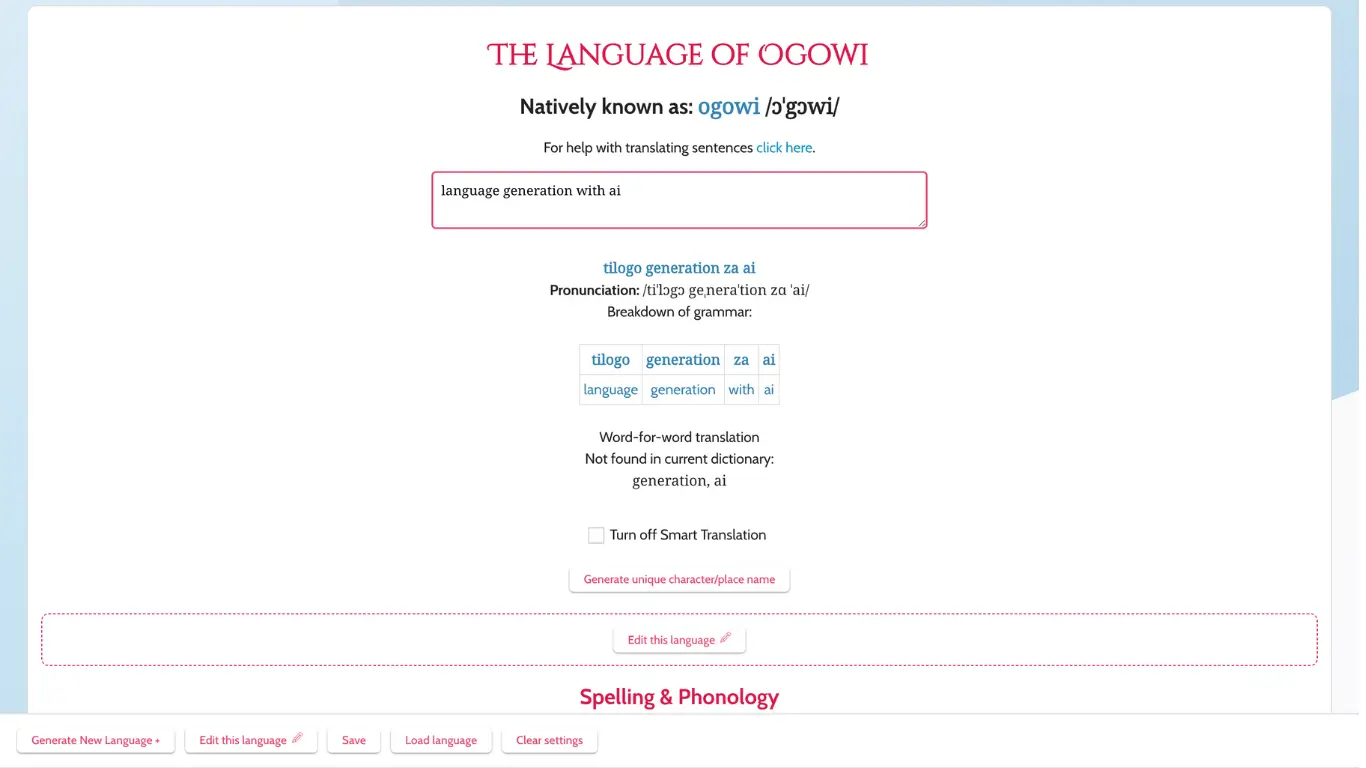
2. Fantasy Name Generators
Best For: Quickly generating names for characters, locations, and fictional worlds.
Features:
- Large databases of names
- Various themes
- User-friendly interface.
Why It Stands Out: Fantasy Name Generators Offers thousands of culturally inspired names ideal for creative projects.
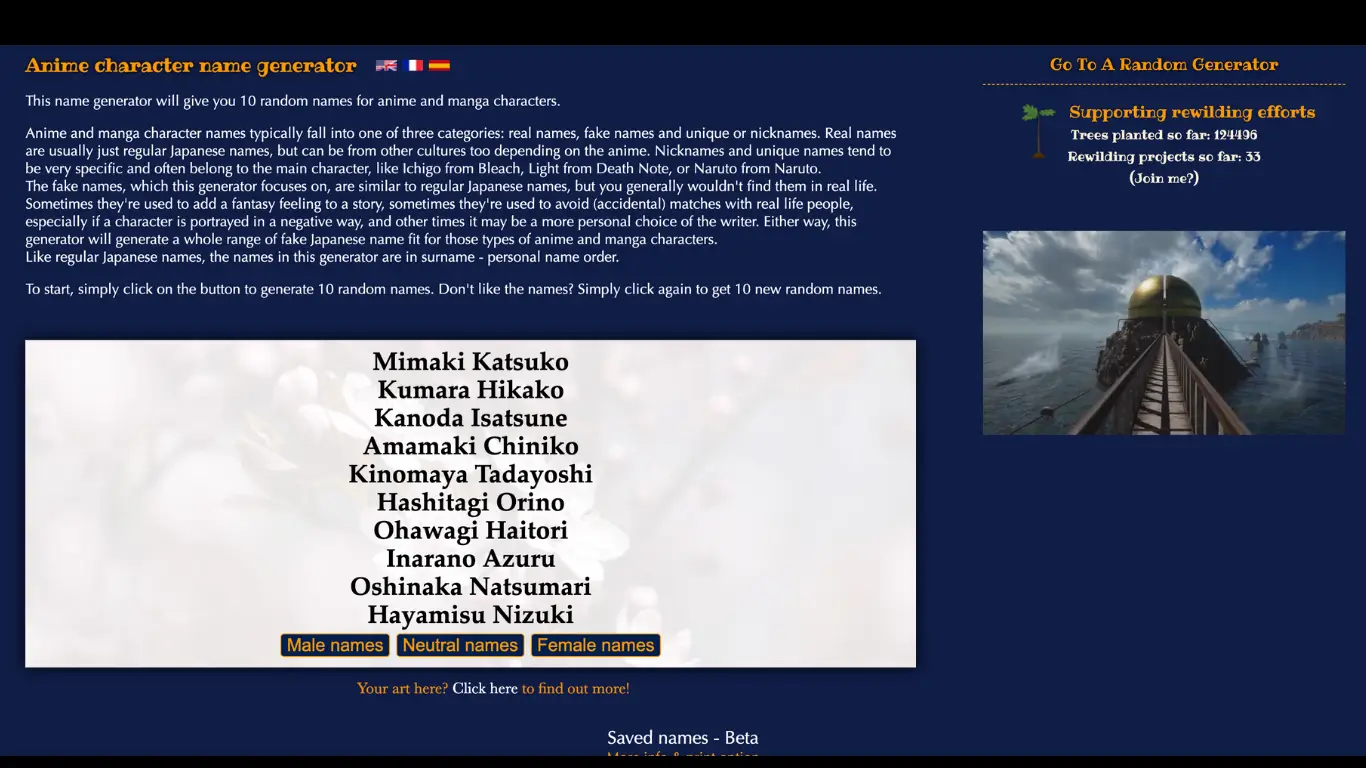
3. OpenAI’s GPT-3
Best for: Creating advanced languages and chatbots.
Features:
- Realistic natural language processing.
- Contextual understanding
- Versatile outputs.
Why It Stands Out: GPT-3 Exceptional realism in dialogues, useful for writing and interactive applications.
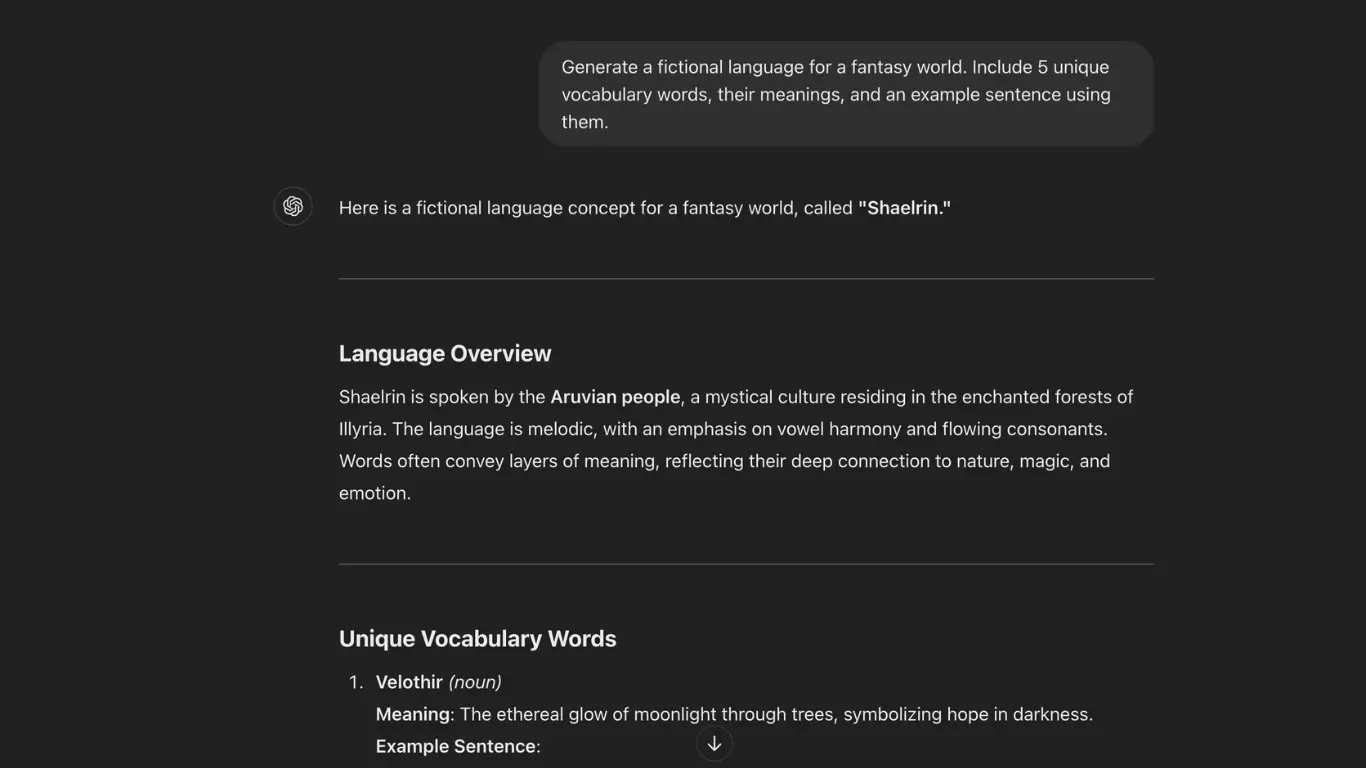
4. Eleven Labs
Best for: High-quality text-to-speech audio.
Features:
- Realistic voice synthesis.
- customizable accents and emotions.
- Easy integration.
Why It Stands Out: Eleven Labs creates realistic voiceovers ideal for games, audiobooks, and podcasts.
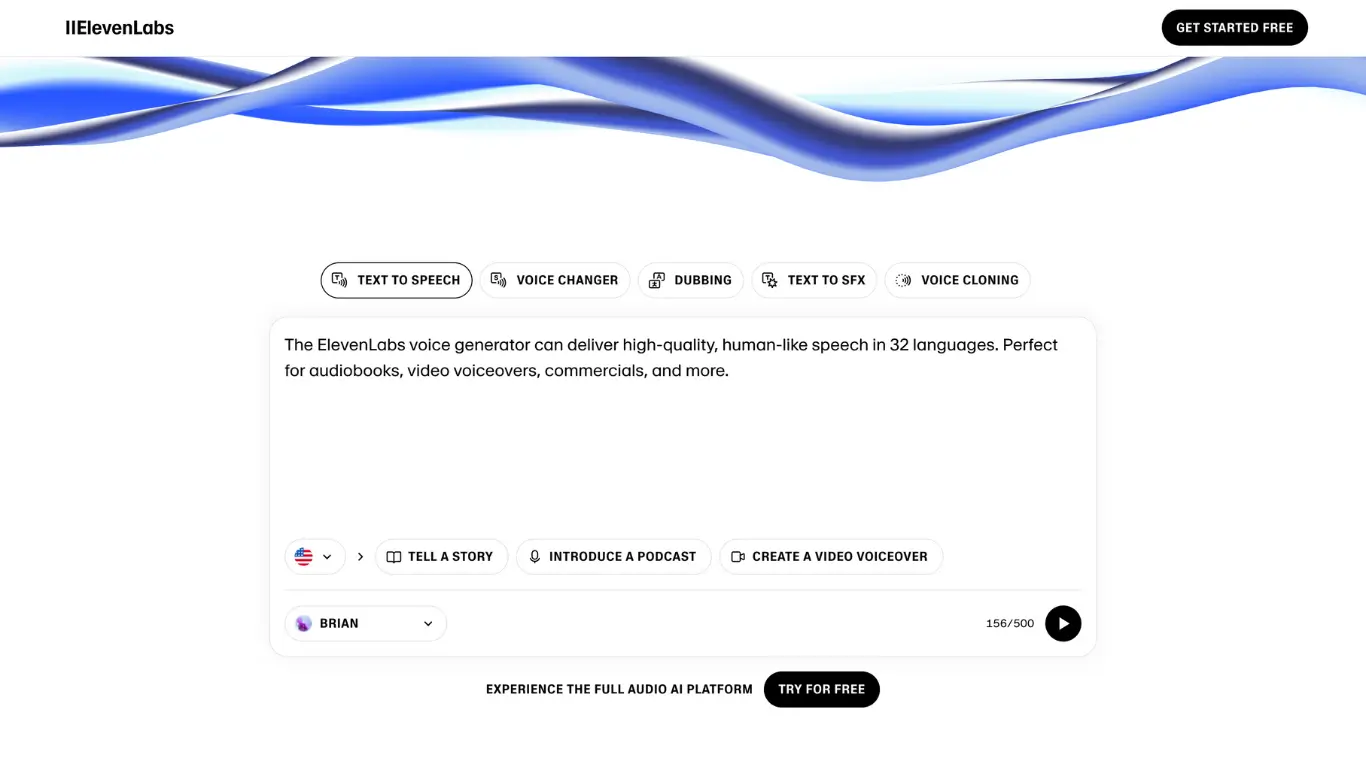
Tips for Choosing the Right Tool
When selecting a language generator, consider:
- Your Goals: Are you building a fantasy world, conducting research, or exploring a hobby?
- Features: Look for tools that will be helpful for your project.
- Usefulness: Some tools would fit more for beginners, while others are more suited to advanced users.
Match up the tool to your needs and let it unleash the full potential of AI in language generation.
How to Use a Language Generator Effectively
Now that you know about the best tools for creating unique languages, let’s dive into how to make the most of them. If you are building a fictional world, trying new languages, or exploring creative ideas, these tips can help. They will guide you in using a language generator effectively.
1. Define Your Purpose
Start by asking yourself: Why are you creating this language? Having a clear purpose helps guide your decisions and keeps your project focused. Consider these scenarios:
- Are you building a fantasy world for a novel or game? Focus on cultural context and phonetics.
- Are you creating a fun secret code? A language randomizer might be all you need.
- Is your goal to experiment with linguistics? Focus on grammar and syntax tools.
2. Experiment with Different Tools
No two language makers are the same, so don’t hesitate to try out multiple options. This allows you to:
- Compare features and interfaces.
- Identify which tool aligns with your creative style.
- Combine outputs from different tools to refine your language.
Pro Tip: Use tools like fantasy language generators for immersive projects and made-up language generators for simpler tasks.
3. Customize to Fit Your Vision
Most AI-powered language creators offer extensive customization options. Use them to your advantage:
- Adjust grammar rules to match your desired complexity.
- Define phonetic styles for consistency in speech.
- Use cultural influences like idioms and proverbs to make it feel real.
4. Test and Refine Your Language
Once your language is generated, it’s important to test it. Here’s how:
- Write a few sample sentences or dialogues to see how it flows.
- Share your language with friends or collaborators for feedback.
- Adjust the grammar, words, or sentence structure based on what you discover.
5. Integrate the Language Into Your Project
The final step is making your language a seamless part of your project. You can:
- Export dictionaries or scripts for use in your writing or games.
- Use audio features to bring the language to life with speech guides.
- Create visual materials, like scripts or symbols to complement your project.
Best Practices for Success
- Start Simple: Begin with basic structures and expand as you go.
- Stay Consistent: Keep grammar and word rules to ensure clarity.
- Let loose! The creation of languages draws from both creativity and structure, so have fun doing it!
Follow these steps, and you will be on your way to creating a language that is real, workable, and, of course, completely yours.
The Future of AI in Language Generation
Artificial intelligence has gone too far in almost all fields, and language generation is no exception. These tools have started becoming advanced, and with it an ocean full of untapped resources that would open up to creators, educators, and innovators everywhere. Let’s see what’s next for this exciting technology and its hopeful future in language-making.
1. Emerging Trends in AI Language Tools
The next generation of language creators is poised to bring even more powerful capabilities, such as:
- Enhanced Contextual Understanding: AI tools will better understand cultural and contextual nuances, creating more authentic languages.
- Real-Time Language Generation: Future tools could enable instant generation of entire languages during live projects.
- Integration with AR/VR: Imagine creating languages that come to life in immersive augmented or virtual reality worlds.
2. Expanding Applications Across Industries
As AI tools improve, their uses will extend beyond creative projects. Here’s how they might shape various fields:
- Entertainment: Movies, games, and TV shows could feature more realistic, culturally rich languages.
- Education: Language generators could change how we use language. They have the power to transform communication. These tools can help people express themselves better. They can also make learning new languages easier.
- With language generators, we can create new words and phrases. This could lead to more creativity in writing. Overall, language generators may greatly impact our world. learning, offering interactive tools for students.
- Business: Brands could use customised languages to create unique customer experiences or marketing campaigns.
3. The Role of Machine Learning in Language Refinement
Machine learning will play a key role in improving fantasy language makers and other tools. Over time, these systems will:
- Learn from user inputs to offer more accurate and personalised results.
- Refine language structures to match real-world linguistic diversity.
- Evolve to create languages that adapt to different cultural and creative contexts.
4. Ethical Considerations and Challenges
While the future of AI in language generation is bright, it also comes with challenges.
- Cultural Misuse: Ensuring AI-generated languages respect cultural identities and traditions.
- Bias in Language Models: Addressing potential biases that could affect language creation.
- Creative Originality: Balancing AI automation with human creativity to maintain originality.
5. What This Means for Creators
For writers, educators, and innovators, the future of fictional language generators holds endless potential.
- You’ll have access to smarter, faster, and more intuitive tools.
- Creative possibilities will expand as tools integrate seamlessly with modern technology.
- Language generation will become more inclusive, catering to diverse needs and projects.
Looking Ahead
AI in language generation is more than a tool—it’s a partner in creativity. As technology improves, it will help creators. This makes it easier and more fun to create unique languages.
Ready to start your journey into the future of language creation? The possibilities remain endless, and new ones keep emerging!

What’s Next?
Crafting a language has never been more accessible, thanks to the power of AI-powered language generators. These tools are more than creative aids. They help us explore new ideas, improve storytelling, and expand what we can do.
If you are making a fantasy world, you might want to try out language ideas. You could also be exploring your curiosity. The right online language creator can help bring your ideas to life.
These tools meet many needs. They help create detailed fantasy languages for books and games. They also provide fun, random ideas with a language randomizer.
They are not just for professionals. Anyone with creativity can jump in and bring their ideas to life.
So, what’s stopping you? If you are a writer, you may want real dialogue for your characters. If you are a gamer, you might want to enhance your game worlds.
If you are a hobbyist, you could be exploring new creative activities. Now is the time to accept these new ideas. Only try doing little things; dabble in other gadgets; do not let fear running loose keep you from following inspiration.
AI is a tool for augmenting one’s creative impulses, not a replacement for them. A language generator is just the start. Your unique view and creativity make these languages come alive.

